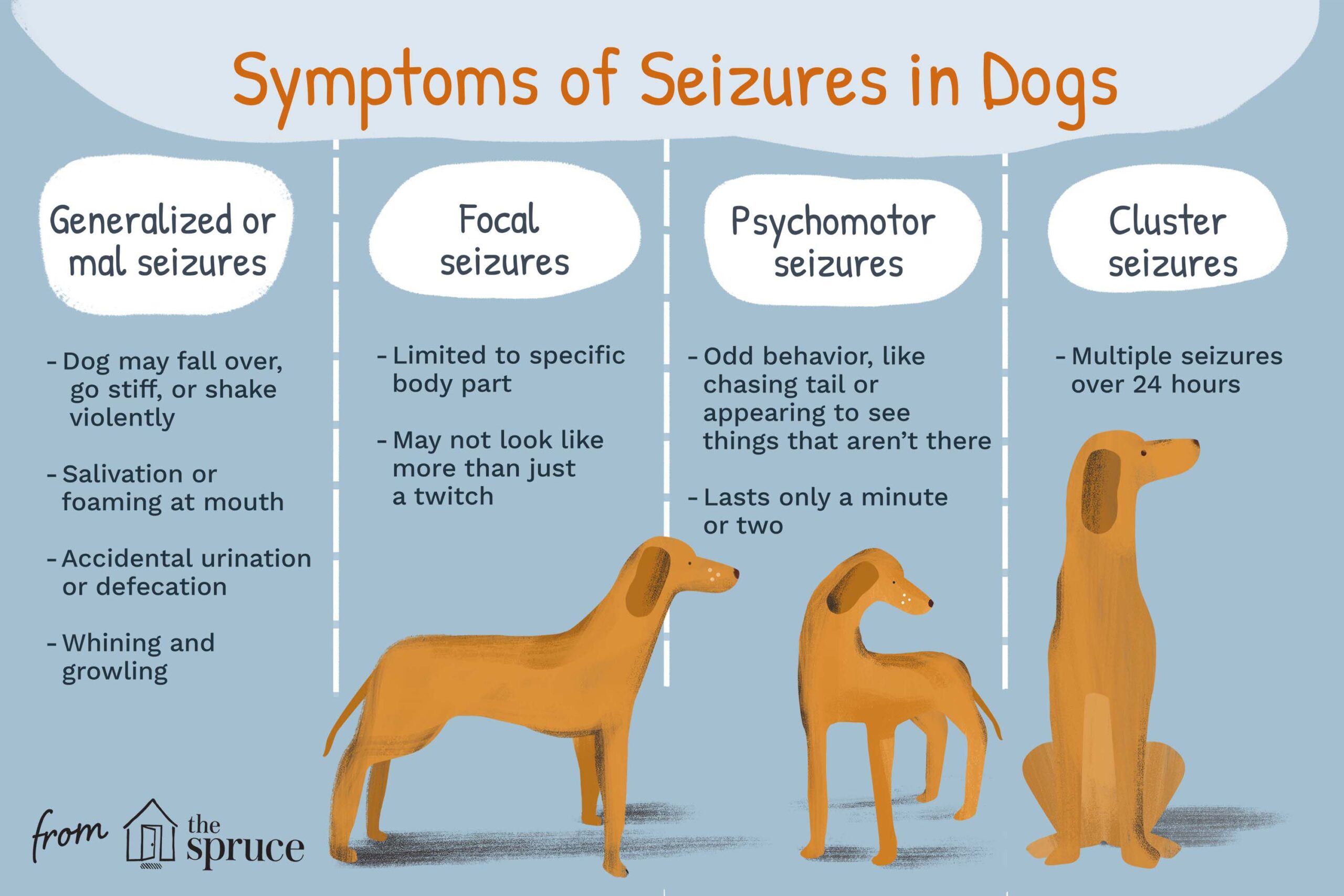Key Takeaways:
- Eclampsia is a life-threatening condition in dogs characterized by low blood calcium levels.
- It commonly occurs in nursing mothers due to the high demands of milk production.
- Symptoms of eclampsia include restlessness, panting, muscle tremors, and seizures.
- Immediate veterinary intervention is necessary to stabilize the dog's calcium levels through intravenous supplementation.
- Prevention involves providing a balanced diet during pregnancy and lactation and monitoring calcium levels regularly.
Are you a dog lover? If so, then understanding the topic of eclampsia in dogs could be crucial for the health and well-being of your furry friend. Eclampsia, also known as milk fever, is a life-threatening condition that affects lactating female dogs. By delving into this subject, you will gain valuable knowledge on how to identify the symptoms and take prompt action to save your dog's life. Did you know that eclampsia can occur within the first few weeks after giving birth, when a mother dog is unable to produce enough calcium to support her puppies' needs? This condition can lead to seizures, muscle tremors, and even death if left untreated. Don't let your beloved pet suffer unnecessarily! Join us as we explore the world of eclampsia in dogs and discover how you can be their hero. Together, we can ensure the safety and happiness of our four-legged companions.
Understanding Eclampsia in Dogs
Eclampsia, also known as milk fever or puerperal tetany, is a condition that can affect female dogs who have recently given birth. It occurs when there is a sudden drop in calcium levels in the blood, leading to muscle tremors, seizures, and even death if left untreated. This condition can be life-threatening for both the mother and her puppies.
What causes eclampsia in dogs?
Eclampsia is primarily caused by a calcium deficiency in the mother dog's body. During pregnancy and lactation, the demand for calcium increases significantly as it is essential for proper muscle function. If the mother's diet does not provide enough calcium or if she is unable to absorb it properly from her food, it can lead to a deficiency and trigger eclampsia.
Recognizing Signs and Symptoms of Eclampsia in Dogs
It is crucial for dog owners to be aware of the signs and symptoms of eclampsia so they can seek immediate veterinary care. Some common signs include:
- Restlessness or agitation
- Tremors or muscle stiffness
- Panting excessively
- Difficulty walking or standing
- Seizures or convulsions
Veterinary Diagnosis of Eclampsia in Dogs
If you suspect your dog might have eclampsia, it is essential to take her to a veterinarian right away. The vet will perform a thorough physical examination and may also conduct blood tests to measure calcium levels. These tests will help confirm the diagnosis and determine the severity of the condition.
Preventing Eclampsia in Dogs: Tips for Dog Owners
Preventing eclampsia starts with providing a well-balanced diet to pregnant and lactating dogs. It is crucial to feed them high-quality dog food that is specifically formulated for their nutritional needs during this stage. Additionally, some preventive measures include:
- Supplementing the diet with calcium under veterinary guidance
- Monitoring the mother's weight gain during pregnancy
- Ensuring access to fresh water at all times
- Limiting stress and providing a calm environment
Treatment Options for Dogs with Eclampsia
The treatment for eclampsia typically involves stabilizing the dog's calcium levels through intravenous calcium supplementation. This helps alleviate the symptoms and prevent further complications. In severe cases, hospitalization may be necessary to closely monitor the dog's condition.
In addition to calcium supplementation, the veterinarian may also prescribe medications to control seizures or provide supportive care such as fluids and rest. It is essential to follow the veterinarian's instructions carefully and continue any recommended treatments until the dog has fully recovered.
Preventing Eclampsia in Dogs: Tips for Dog Owners
Understanding the Risk Factors
Eclampsia, also known as milk fever or puerperal tetany, is a serious condition that can affect lactating dogs. It occurs when there is a sudden drop in blood calcium levels, leading to muscle tremors, seizures, and potentially life-threatening complications. While any dog can develop eclampsia, certain factors increase the risk. Small breed dogs with large litters are particularly susceptible due to the high demand for calcium during nursing. Additionally, poor nutrition during pregnancy and inadequate supplementation of calcium-rich foods can also contribute to the development of eclampsia. It is crucial for dog owners to be aware of these risk factors to take appropriate preventive measures.
Providing Proper Nutrition
One of the most effective ways to prevent eclampsia in dogs is by ensuring they receive proper nutrition throughout pregnancy and lactation. A well-balanced diet that includes high-quality dog food formulated for pregnant and nursing dogs is essential. These specialized diets contain optimal levels of calcium and other nutrients necessary for maintaining healthy blood calcium levels. It is important not to supplement additional calcium without consulting a veterinarian as excessive amounts can have adverse effects. Regular veterinary check-ups during pregnancy can help monitor the dog's nutritional needs and make any necessary adjustments.
Monitoring Calcium Levels
Regular monitoring of blood calcium levels during late pregnancy and early lactation is crucial in preventing eclampsia. Veterinarians can perform simple blood tests to assess calcium levels and determine if supplementation is necessary. If a dog shows signs of low blood calcium or has a history of previous eclampsia episodes, additional supplements may be recommended under veterinary supervision. However, it is important not to administer any medications or supplements without professional guidance, as incorrect dosages can be harmful.
Limiting Stress and Exercise
Stress and excessive physical activity can contribute to the development of eclampsia in dogs. It is important to provide a calm and stress-free environment for pregnant and nursing dogs. Avoid exposing them to loud noises, unfamiliar surroundings, or aggressive interactions with other animals. Additionally, limiting strenuous exercise during late pregnancy and early lactation can help prevent calcium depletion. Gentle walks and moderate playtime are generally safe but should be monitored closely.
Treatment Options for Dogs with Eclampsia
Emergency Veterinary Care
If a dog develops eclampsia, immediate veterinary care is essential. Eclampsia is a medical emergency that requires prompt treatment to stabilize blood calcium levels and prevent further complications. Veterinarians may administer intravenous calcium gluconate to quickly raise calcium levels. In severe cases, hospitalization may be necessary for intensive monitoring and supportive care.
Supplemental Feeding
Along with veterinary treatment, providing supplemental feeding can help support dogs recovering from eclampsia. This involves offering small, frequent meals of high-quality puppy food or specialized diets recommended by the veterinarian. These diets are designed to provide adequate nutrition while gradually increasing calcium levels without overwhelming the dog's system.
Weaning Puppies
Weaning puppies earlier than planned may be necessary if a mother dog experiences eclampsia. This reduces the demand for milk production, allowing the mother's body to recover more effectively. However, it is crucial to consult with a veterinarian before making any decisions regarding early weaning as each situation may vary.
By following these preventive tips and seeking immediate veterinary care if eclampsia occurs, dog owners can help protect their furry companions from this potentially life-threatening condition. Remember, always consult with a veterinarian for personalized advice and guidance tailored to your dog's specific needs.
In conclusion, eclampsia is a serious condition that can affect dogs during pregnancy and after giving birth. It is important for dog owners to be aware of the signs and symptoms, and seek veterinary care immediately if they suspect their dog may have eclampsia. Early treatment can help prevent complications and save the dog's life.
What are the first signs of eclampsia in dogs?
At first, the signs may not be obvious. The female may show signs of restlessness or excessive panting, and you may observe that she is experiencing difficulty moving, which can eventually lead to an inability to walk. These symptoms then progress to muscle spasms throughout the entire body, which can rapidly escalate to convulsions.
What are the signs of milk fever in dogs?
Signs of milk fever in dogs are initially mild and may include restlessness, heavy panting, excessive drooling, stiffness, vomiting, decreased appetite, and difficulty standing or walking. As the condition progresses, muscle tremors, seizures, and fever may occur.
Can dogs get eclampsia after birth?
Milk fever in dogs, also referred to as canine eclampsia or lactational hypocalcemia, is a condition that can occur after a dog gives birth and is nursing her puppies. During the lactation period, calcium is transferred from the mother to her puppies through her milk.
What are the symptoms of low calcium in nursing dogs?
Pets that have unusually low levels of calcium may exhibit symptoms such as muscle twitching, decreased appetite, weakness, and a lack of energy. In more severe instances, pets may experience convulsions or seizures.
How quickly does eclampsia develop in dogs?
The treatment for neurologic signs in cases of eclampsia typically involves intravenous administration of calcium gluconate. Eclampsia is a serious condition that presents as a sudden and life-threatening episode, usually occurring around 2-3 weeks after giving birth during the peak lactation period.
Do Tums help dogs with eclampsia?
After the symptoms are managed, the patient can be discharged and prescribed oral calcium carbonate tablets (available over the counter as Tums) at a dosage of 25-50 mg/kg/day. Additionally, it is important to wean the puppies right away and evaluate the mother's diet to ensure she is receiving adequate nutrition for the weaning process.

















